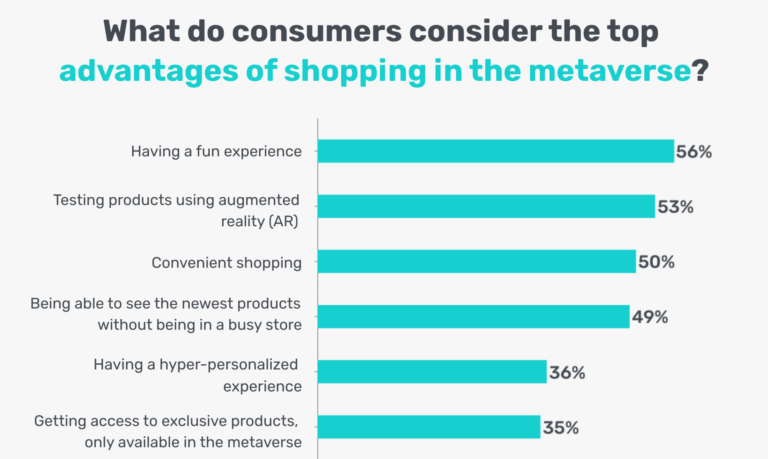
Earlier this year, Shopify announced the launch of live video shopping within the company’s consumer-facing Shop app.
The Ottawa e-commerce giant selected Stage TEN as the live video commerce alpha partner for Shop Minis, “where best-in-class technologies can extend functionality directly into the Shop app environment,” according to a statement from the Toronto-area firm.
“With Stage TEN’s Shop Live channels, merchants can instantly notify a massive network of qualified buyers in an app they already use,” stated Dave Lazar, chief executive of Stage TEN, in February. “With a tap, audiences are immersed in an interactive experience—talking with merchants and buying on screen.”
Immersion is an important aspect—an area where digital often lacks versus brick-and-mortar. Reports last year showed that, post-Pandemic, Canadians remain enticed by in-store experiences.
“Imagine having a real person thank you in real time when you buy online,” Lazar emphasized of the live feature. “That’s conversational commerce.”
Live commerce has a big hurdle to overcome. Despite “a large increase in online shopping throughout the pandemic,” 67% of Canadians still prefer to shop in a physical store—higher the global average of 59%, a report from Adyen and KPMG stated.
This challenge also represents a big opportunity for merchants and the fintech firms that power their digital models. It’s a huge global market and growing still.
Where are consumers shopping today, and why? Where will they be shopping tomorrow?
These critical questions gain complexity when digital innovations create new channels where potential customers are spending time—and money. One of these innovations is web3 and augmented reality.
Consumers are surfing alternate realities from their couches. Do retailers and fintechs need to keep up?
Commerce is increasingly taking place in the metaverse, where various startups and other organizations are taking on a variety of projects across the web3 realm. But it’s a tiny market, at least for now.
The metaverse is currently associated most strongly with gaming. It’s the number-one activity performed. “Shopping” in the e-commerce sense isn’t really there yet, although many things are indeed for sale.
With many things for sale—mostly digital goods, especially games—more than one-third of metaverse users have already made a purchase within the digital world, according to data from a survey conducted by GetApp, a software comparison platform based in Toronto. And that is commerce. It’s a start.
“There may be an opportunity here for brands to create virtual stores or experiences where people browse and test products in a more real way than they currently can on e-commerce sites,” writes Tessa Anaya, a Content Analyst for GetApp.
Canadians see many potential benefits with metaverse commerce. For example, “testing products” through AR is one advantage considered by 53% of consumers, as well as seeing brand new products without the chaos and annoyances of driving to a busy store (49%).
More than half of consumers are excited about shopping in the metaverse simply because it could be more “fun” than shopping online or in-store. Some also cited interest in enjoying a “hyper-personalized” shopping experience (36%).
A more present use case is for virtual products, says Anaya, “which are more popular among current metaverse users than physical ones.”
Virtual items for one’s metaverse avatar is a popular purchase, for example. If you’re at home and on the metaverse, who really needs to shop for an impressionable fit—you or your avatar?
Cryptocurrency and non-fungible tokens are also frequently transacted within the metaverse, GetApp data shows.
But for things that aren’t NFTs, we know Canadians lean toward in-store shopping because online commerce lacks the level of support they desire, as well as the ability to use other senses to properly analyze an item’s fit, texture, and other physical aspects.
“Generally speaking, those who prefer online shopping find most aspects easy, but two areas could be improved,” observes Anaya. “Getting support can be difficult, and some said that it can be hard to get a sense of how a product will look and feel when viewing it on a website.”
When designing metaverse shopping experiences, retailers may aim to differentiate within these areas, she suggests.
About half of metaverse users may be interested in 3D shopping, according to GetApp data, but overall uncertainty about the digital realm remains a disincentive for many retailers to actively invest in the experiment.
Still, most believe the metaverse could bridge gaps between e-commerce and physical retail that internet stores simply cannot.
Consumers are satisfied with more efficient checkout processes that commerce sites have developed, for example. But in other areas, online shopping has not progressed in years, and still falls well short of physical experiences.
GetApp’s survey suggests that, while metaverse shopping may not dramatically impact the way Canadians shop, it could improve on known flaws with current e-commerce experiences.
The proposed advantages of web3 commerce “overlap in many ways with the things that online shoppers currently like, suggesting that metaverse shopping won’t necessarily transform online shopping, but has the potential to offer a more immersive experience,” writes Tessa.
Adoption isn’t the only hurdle to overcome for retailers looking to profit in the metaverse. Consumers remain concerned about handling of data and other aspects of digital protection within the metaverse, GetApp data confirms—no major surprise given the crypto world’s recent volatility.
Safety and security will thus have to match any immersion factor in order to truly draw Canadian consumers from in-store to in-metaverse.
“While current uptake of the metaverse is slow amongst consumers, it definitely has potential to change e-commerce trends,” stated Anaya. “The possibilities for upgrades to the shopping experience using augmented reality, personalization, and social elements are not lost on consumers.”
Overall, metaverse shopping remains a niche concept, but with much potential. Fintechs will have to advance their technologies and invest in the metaverse in order to create a level of commerce innovation that will draw merchants and consumers to the platform en masse.
“Although the metaverse carries concerns for some,” Anaya concluded, “most can see the potential for innovation that it holds.”


Leave a Reply